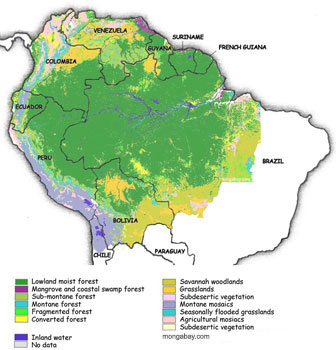
BRAZIL TODAY
Country Facts

DID YOU KNOW?
- Brazil is larger than the continental US and Australia. It is the fifth largest country in the world.
- With a population of 190 million, Brazil is also the fifth most populous country and fourth largest democracy. Sao Paulo is the second most populous city in the world, with almost 20 million people. Four million African slaves were transported to Brazil, 7 times the number transported to the US. The majority of the population is black, or partly so. Only Nigeria has a larger black population.
- Brazil is also one of the most unequal societies. 5% of the population own 85% of the wealth.
- Brazil is the world's largest exporter of iron ore and soya; it will soon be the largest exporter of frozen meat. Brazilian industry produces more cars than Mexico, more steel than Italy, the same amount as India.
- Brazil is technically self-sufficient in oil and If recently discovered reserves are proven, is likely to become a major oil exporter in the future.
- Brazil is the country outside the G8 with the best science base (as measured by the frequency its scientific papers are quoted).
- Brazil has the world's largest reserves of tropical forest, freshwater and of bio-diversity. Enough water flows out of the Amazon each day to keep New York City going for 10 years.
Environment and Climate Change

Brazil is the 4th largest global emitter of greenhouse gases, 75% of which results from land-use change, in particular deforestation. 18% of the Brazilian Amazon has been deforested since 1970 (an area three times the size of the UK) at an average rate of around one Wales every year. Since 2005, the Brazilian government has announced steady falls in the rate of deforestation—by 25% in 2006 and an additional 20% in 2007 (although there was a slight rise in 2008). Over the same period Brazil has increased the number of protected and indigenous reserves (which now account for around 35% of the Brazilian Amazon), and established a national forestry service. It’s National Plan on Climate Change, published in December 2008, sets out a number of domestic targets for the country including zero illegal deforestation by 2017.
Many people enjoy nature, and there are lot's of things to be seen in Brazil. For example the biggest forest in the world, the Amazon forest (where the biggest river in amount of water and size is located);
The Atlantic forest (located along the brazilian atlantic coast), which has been reduced to a small sizes due to deforestation, but has a incredible number of different species of flora and fauna, one of the biggest varieties in the world;
You can visit the "cerrado" , located in the centre-west region, where the federal capital (Brasilia) is located (Brasilia was specially designed by one of the most respected architect in the world, Oscar Niemeyer). The Cerrado has some similarities with the famous African Savanah, but with some periodes of heavy rain, which makes possible the use of these lands for agriculture, and the existence of the Pantanal, a rich region in terms of nature.
There is the "Caatinga", located in the western side of the Brasilian north-east region. This is a unique place in the world, there's no other place like it. With long periodes of drought, this is the hottest region in Brazil. During the rainy months, the rain falls strongly and makes some periodical rivers appear (these rivers appear only durin a few months of the year, when it rains). There are just two "perennial" rivers in this region. When the rain comes, plants cover the plans, the appearance of the region changes completelly, into a beautiful green state.
The southern region, where most of the people are of european descendence (mostly germans and italians), the land is very rich in minerals, very good for agriculture. There are two diferent kind of vegetation there. One is the Conifers forest (kind of forest also known by americans, that are located in colder places) and the "Pampas", that extend all the way to Argentina. The Pampas are wide "grassy" plains, not very rich in diverse species, but economically important, specially used for livestock. In this region there is also huge, impresive, and beautiful waterfall, near the border with Argentina known as "Cataratas do Iguaçú".
No comments:
Post a Comment